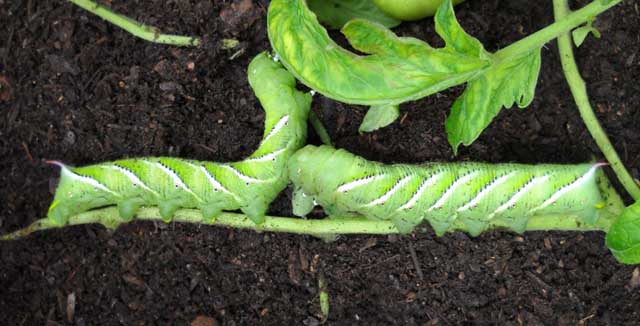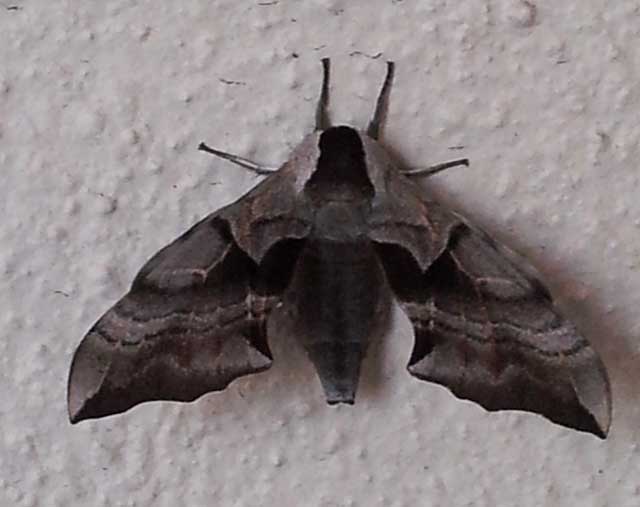Alameda County
Sphingidae

Manduca sexta fifth istar larvae on tomoatoes,
Berkeley, Alameda County, California,
August 5, 2011, courtesy of Grace Munakata
|
|
Created/dedicated as per personal communication with Grace Munakata, August 5, 2011 Updated as per BAMONA, August 5, 2011 Updated as per James P. Tuttle's The Hawk Moths of North America, August 5, 2011 |

Grace is a teacher and a painter. She writes, I "have planted my backyard almost entirely for bugs & birds. Have a butterfly bush that is more like a tree and plenty of milkweed. Have seen no monarchs so far & less than 6 swallowtails. Lots of bees tho."
I recommended she plant some portulaca to bring in Hyles lineata, and I am very surprised she has not recorded Hemaris thetis on her butterfly bush, but they do look quite a bit like large bees!.
Many thanks to Felice O'Ryan who sends this beautiful image of Smerinthus cerisyi, May 1, 2012.

Smerinthus ophthalmica, Alameda County, California,
May 2, 2012, courtesy of Felice O'Ryan.
It is hoped that this checklist, with the thumbnails and notes, will help you quickly identify the moths you have encountered.
A WO" after the species name indicates that I have no confirmed reports of this species in your county, but I (William Oehlke) expect that this moth is present.
A BAM indicates the moth is reported on the USGS website (now BAMONA) and/or in Moths of Western North America, #2. Distribution of Sphingidae of Western North America, revised, an excellent little booklet available through Paul Opler.
Please help me develop this list with improved, documented accuracy by sending sightings (species, date, location), preferably with an image, via email to Bill Oehlke.
Sphinginae subfamily
Smerinthini Tribe:
Macroglossinae subfamilyDilophonotini Tribe:
Philampelini Tribe:
Macroglossini Tribe:
|
Enjoy some of nature's wonderments, giant silk moth cocoons. These cocoons are for sale winter and fall. Beautiful Saturniidae moths will emerge the following spring and summer. Read Actias luna rearing article. Additional online help available.
Use your browser "Back" button to return to the previous page.
This page is brought to you by Bill Oehlke and the WLSS. Pages are on space rented from Bizland. If you would like to become a "Patron of the Sphingidae/Catocala Sites", contact Bill.
Please send sightings/images to Bill. I will do my best to respond to requests for identification help.
 Show appreciation for this site by clicking on flashing butterfly to the left. The link will take you to a page with links to many insect sites. |